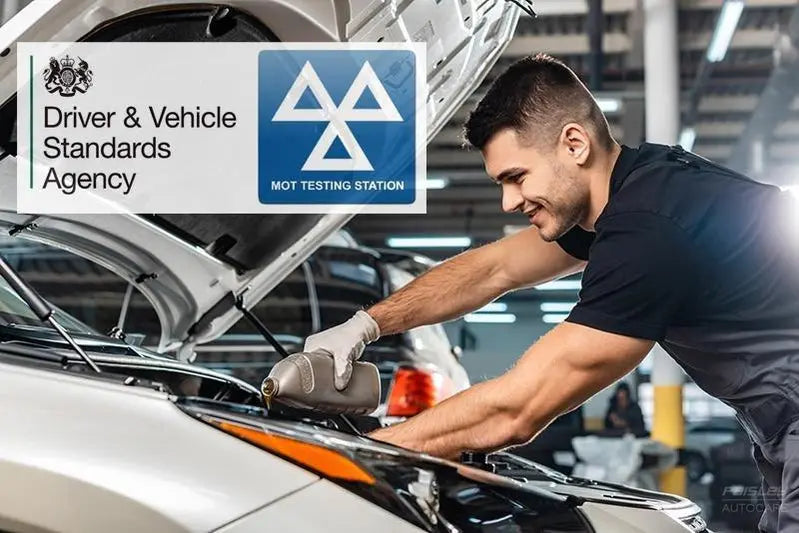If you own a car that is more than 3 years old then you should be familiar with the annual MOT test. If you’re not familiar with it, then listen up because this is crucial information and you might find yourself calling up your local garage to arrange a test for yourself very soon.
The acronym “MOT” stands for the now-defunct Ministry of Transport. Nowadays we would call it the Department for Transport (DfT), but the test is actually run according to standards set by the Driver and Vehicle Standards Agency (DVSA), an agency that falls within the purview of the DfT.
How is the Test Organized?
The test is classed into eight different classes, each denoting a different type of vehicle. Class I, for example, if for motorcycles up to 200cc with or without side cars. Most people get the Class IV test, which covers all cars, taxies, minibuses, ambulances and small goods vehicles. The cost of the test for Class IV is set at £54.85-57.30 depending on the exact size of your vehicle.
What Do They Check in the MOT Test?
The test is very comprehensive and will check multiple areas of your vehicle. Below is a basic list of all the things they are going to check during your MOT test:
Emissions:

One of the most well-known MOT checks is that of your exhaust system and emissions levels. If your exhaust has leaks at any point, it is likely to cause a test failure. If you enjoy car modding, you also had better make sure the original catalytic converter is still in place and still working.
The emissions test particular looks for carbon monoxide (CO), hydrocarbons (HC), oxides of nitrogen (NOx) and particulate mass (PM). To meet “Euro 4” limits, the requirements are as follows:
- CO: 1000mg/km (petrol); 500mg/km (diesel)
- HC: 100mg/km (petrol); No single limit (diesel)
- NOx: 80mg/km (petrol); 300mg/km (diesel – combined with HC)
- PM: No limit (petrol); 25mg/km (diesel)
“Euro 5” limits came into effect from 2009 and are as follows:
- CO: 1000mg/km (petrol); 500mg/km (diesel)
- HC: 100mg/km (petrol); No single limit (diesel)
- NOx: 60mg/km (petrol); 230mg/km (diesel – combined with HC)
- PM: 5mg/km (petrol – direct injection only); 5mg/km (diesel)
“Euro 6” limits came into effect from 2014 and are currently (as of January 2020) as follows:
- CO: 1000mg/km (petrol); 500mg/km (diesel)
- HC: 100mg/km (petrol); No single limit (diesel)
- NOx: 60mg/km (petrol); 170mg/km (diesel – combined with HC)
- PM: 4.5mg/km (petrol – direct injection only); 4.5mg/km (diesel)
Brakes:

Faulty brakes cause almost 10 percent of all MOT test failures. They check the condition of your pedals, as well as your warning lights and braking distance.
Steering/Suspension:
If your steering wheel feels loose or in otherwise bad condition, then you could fail the test. Qualified mechanics also check the shocks/struts and other related parts for wear and tear.
Tyres

Another 10 percent of tests are failed because of problems with the tyres. Tread depth is a common thing that goes wrong, not meeting the 1.6mm requirement. In addition, the test looks for defects like bulges and tears.
Lamps and Reflectors:

This is one of the biggest causes of failure, bringing about some 30 percent of MOT failures. The testers will check your headlights, indicators, fog lights, brake lights and rear lights, and not just that they light up. They also look at position, general condition, colour, and whether they light up at a single press of the switch.
Other Electrical Equipment
Other electrically operated gear like the wiring, towbar socket for trailer lights, battery, horn and other similarly categorised equipment must be in good working order.
Seat Belts

If one or more of your seatbelts are the incorrect length, or fail to connect properly with the clasp, then you’re certain to receive a failing grade.
Other checks
The test also ensures standards are being met on tings like corrosion on the key bodywork parts, proper registration plate spacing, font and visibility; a correct and visible Vehicle Identification Number (VIN), and that speedometer is accurate. One final thing is driver visibility from the cockpit. This last one can be impacted by insecure mirrors, faulty wipers or anything that would otherwise impact your field of vision while out driving.
Why are MOT Tests Conducted?
The basic function of the MOT test is for the appropriate authorities to determine that the car you are driving is safe and roadworthy. By checking on the car’s safety features, as well as its emission levels, it can be confirmed that the vehicle meets the most current standards as set by the DVSA and DfT.
As of 2018, problems in your car are classified into one of three categories: Minor, Major or Dangerous. Any fault in the latter two categories will result in an automatic failure.
The test is also designed to provide vehicle owners with an essential action plan of things they need to do to repair any faults that may be present and make the car roadworthy again. The test will particularly address major or dangerous faults, but these may include simple things like not enough windscreen washer fluid or a dirty registration plate. They also include more serious things of course, such as a faulty diesel particular filter, broken catalytic converter, tyres not meeting the required tread depth and more.
Do All Vehicles in the UK Have to Take the MOT Test?
The MOT test applies principally to any and all vehicles that are more than three years old. There are some notable exceptions, however, most notably to classic cars more than 40 years old. If your car was first registered more than 40 years ago, and has had had no “substantial changes” made to it, then it is exempt from the MOT test.
The DVSA defines “substantial change” as one that changes the technical characteristics of the principal vehicle components. They also say that this change should have happened within the last 30 years to make the exemption invalid.
None of this means that classic cars don’t have to be otherwise roadworthy, however. They would likely still attract police attention should they not have properly working lights, be emitting huge clouds of pollutants, etc.
What do I do if I Fail the MOT Test?
If you fail to meet the requirements, you’ll be given a clear list of the issues that caused the failure, and other minor problems, too. Use this list to have any problems with the car fixed. Many of the things that cause you to fail are items of simple and everyday maintenance that you could check for yourself. For example, topping up the windscreen washer fluid.
Once the vehicle is back up to code, you can have it tested again, and if you’ve taken care of everything on the list --- at least the Dangerous and Major categories of fault, then you’ll be in great shape. If you have any Dangerous faults, you won’t even be able to take your car back home after the failed test. If you have any Major or Dangerous faults and your previous MOT has expired, then you won’t be able to drive away in your failed vehicle.
Check Your Vehicle’s Status
If you’re not sure whether or not your vehicle is due for its next MOT, you can go to the gov.uk website (https://www.gov.uk/check-mot-status) and enter the registration to see your current MOT status. If you had an MOT within the last 12 months, but are not certain when to get the next one, we recommend going about a week before the date of your previous test. This will allow you to drive away should there be Major faults that need attending to, but not Dangerous faults, because your current MOT is still valid.
Keep on top of your MOT information and stay on the right side of the law. It’s not just about your own safety, but that of other road users.




